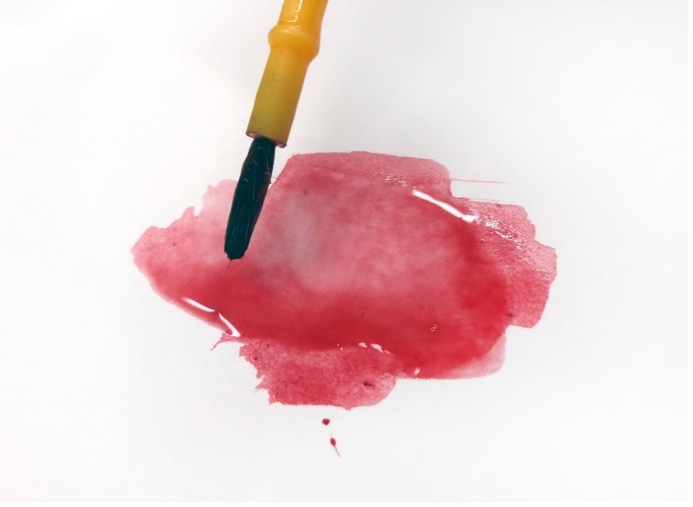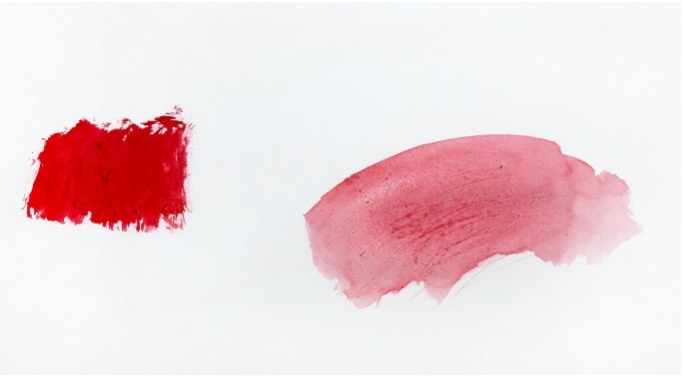Overview
Watercolors
We’ve learned how to use watercolors, now let’s try different ways to paint with these colors!
Materials and Tools
- Set of watercolors
- Cup of water (use a shallow container with a wide base that won’t spill)
- Paper towel to dry brush
- 9 x 12” or 12 x 18” paper
Activities
Step by Step:
- Open your watercolor set. Look at all the colors! Find the primary colors (red, blue, yellow?)
- Let’s start with one of the primary colors—red.
- Take out the paintbrush. What are the parts of the paintbrush called? Try out your bristles on your hand again. Do they still feel soft?
- How should we use our paint? Remember that we need to wake it up!
- Start with water, wake up the color, then try out the red. Make a patch of color. What do you notice about the color? Does the whole patch look like it is the same color?

- Next, let’s try to make a new patch of red, starting with the same steps. Wake up your red! This time let’s add some extra water. Dip your brush in the water cup and add some water onto the red on your paper. What happened to the red? Add a little bit more water. Now what happened? How did the color change? Can you spread out the color?
- Now, let’s try using the paint without adding water. Just dip your brush into the red and wake it up by stirring a lot. Now try that on the paper. This is called “dry brush!” How is that red different?
- Let’s try one more way to paint with color. This time let’s start by putting your brush into the water and painting it right on to the paper. Spread it out to make a wet patch.
- Now get some red paint and dab little dots of red into the water. What happened when you put the wet red paint onto the water on the paper? The paint spreads into the water. This way of painting is called “wet-on-wet.”
- You can try the same ways of painting with another color. But what will happen if we put our brush with red on it into another color? We need to clean our brush!
- Dip the brush into the water and gently “stir, stir, stir, stop!” or “1,2,3, stop!”
- Now let’s try these ways of painting with another color. Can you make a light blue and a light yellow? Will you try to paint with them using wet-on-wet?




Prompts for Independent Art Making:
Try to make a painting with just one color! How many kinds of blue can you make, just by adding water and trying different ways of painting? Try brushing water onto your paper and then make dots and lines of color in the water. Watch how it spreads! Then try making a painting only with yellow.
Did you notice that you can see through the colors that watercolors make? That means they are transparent. What have you seen in the world that is transparent—that you can see through? What about something else that is colored that you can see through? The next time you go for a walk, see if you can find things out in your school or neighborhood that are transparent. (Glass, bubbles, stained-glass windows)
Artists for Inspiration:


Look at these watercolor paintings. Can you see areas where the color looks like it is very light? How do you think the artist make the color so light?? What about area where the colors are very dark? Do you see areas where the paint spread out in the water like the wet-on-wet technique?
Reflection Questions
- How do we make watercolors lighter? How do we make them darker?
- Which way of painting with color did you like using the best? Why?
Vocabulary
Paintbrush—handle, bristles, dab, light/dark
Mix/blend, spread, dry brush, wet-on-wet, transparent
Resources
Books: Dawn by Uri Shulevitz (watercolor illustrations of a pond landscape in daytime/nighttime, light/dark)

